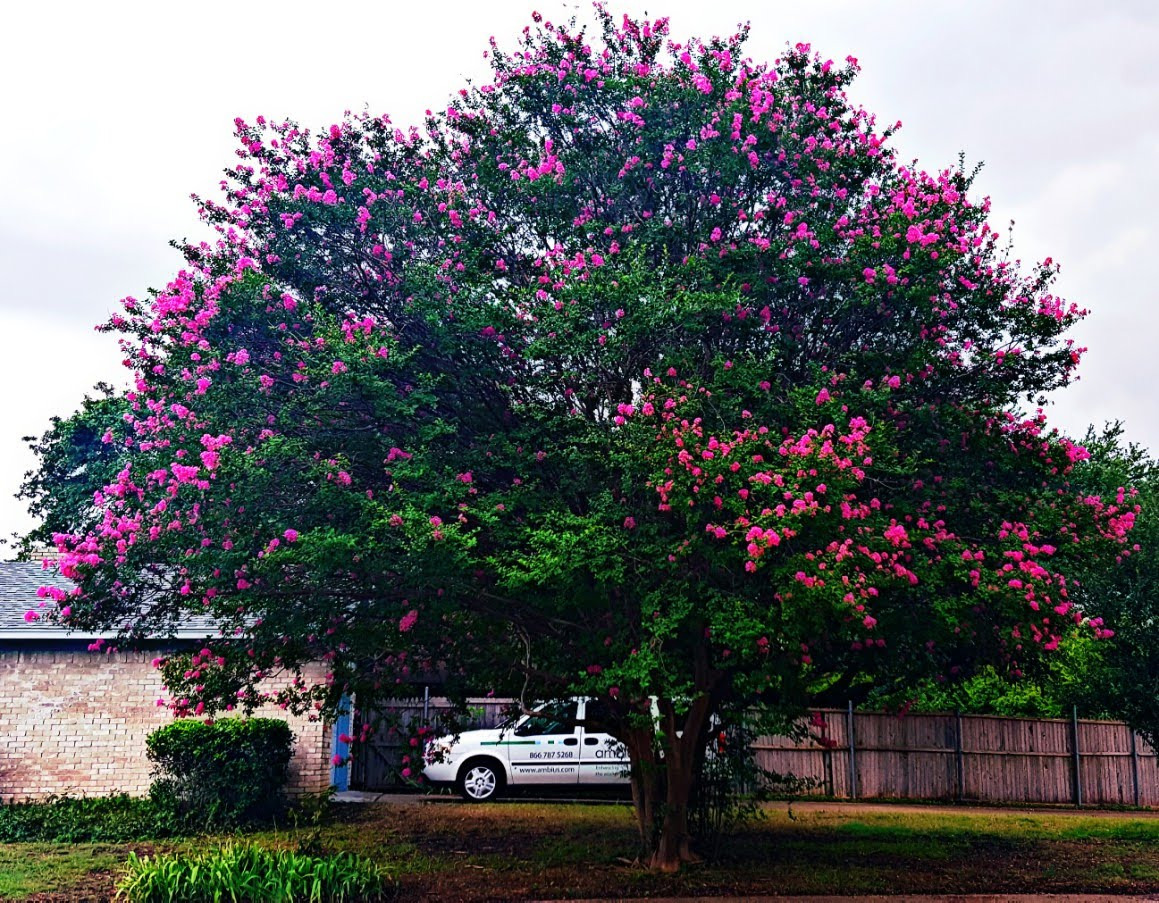Introduction to Crape Myrtles in Texas
One of our favorites here at Texas Garden Blog, crape myrtles are a staple of Texan landscapes, celebrated for their vibrant blooms, adaptability to the climate, and minimal maintenance needs. These trees bring year-round beauty, from their summer flowers to their attractive bark in winter.
Types and Colors of Crape Myrtles
Crape myrtles come in a wide range of varieties, from dwarf shrubs to towering trees. Their colors include striking reds, soft pinks, elegant purples, pristine whites, and more. Popular types include the showy Dynamite with its bold red blooms and the enchanting Twilight with its deep purple flowers.
Hardiness and Drought Tolerance for Crape Myrtles
Known for their resilience, crape myrtles thrive in Texas’ hot and dry conditions. They are drought-tolerant once established, making them an excellent choice for water-conscious gardeners. Additionally, they are resistant to pests and diseases, ensuring longevity in challenging environments.
Proper Trimming Techniques
Pruning is crucial for maintaining healthy, beautiful crape myrtles. Avoid the infamous “crape murder” by trimming carefully in late winter or early spring. Focus on removing deadwood and shaping the tree to enhance airflow and sunlight penetration.
Maximum Sizes and Growth Habits
Crape myrtles vary in size from compact 2-foot shrubs to majestic trees reaching up to 35 feet. Their growth habits depend on the variety, so it’s essential to choose a type that suits your space and landscape needs.
Water Needs
Although drought-tolerant, crape myrtles benefit from deep watering during extended dry spells, especially in their first year. Ensure proper drainage to prevent root rot and support optimal growth.
Wind Storm Resilience
Crape myrtles are sturdy trees that can endure strong winds. While their flexible branches help them resist damage, occasional trimming and support can help younger trees recover quickly after severe storms.
Shade and Color Benefits
With their sprawling canopies, crape myrtles provide much-needed shade in hot Texas summers. Their vibrant blooms not only add color but also attract pollinators like bees and butterflies, enhancing your garden’s ecosystem.
Seasonal Care
Crape myrtles need care throughout the seasons. Plant them in early spring or fall, fertilize in late winter, and protect their roots with mulch during harsh winters. These steps ensure healthy, flourishing trees year-round.
Choosing the Right Variety for Your Garden
When selecting a crape myrtle, consider your garden’s size, soil type, and desired bloom color. Dwarf varieties are perfect for small spaces, while taller types make excellent focal points or shade providers.
